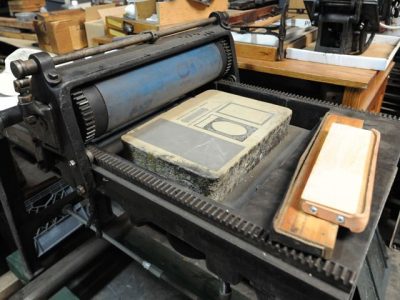The Perks of Using litho printing for Business Collateral
A Comprehensive Guide to Understanding Litho Printing Strategies
The world of litho printing, a strategy originating from the late 18th century, is a remarkable mix of background, scientific research, art and innovation. This comprehensive overview will unwind the intricacies of this printing approach, from the structure of litho inks to the obstacles faced in modern-day applications. As we venture right into the details of lithography, the significance of automation and sustainability in guaranteeing its future significance becomes increasingly clear. Remain with us as we trip right into the captivating world of litho printing.
The Historical Evolution of Litho Printing
The historical trajectory of litho printing, a critical development in the realm of communication, is a fascinating story of human ingenuity. Birthed in the late 18th century by Alois Senefelder, this technique was at first a cost-effective method of releasing theatrical works. Lithography, acquired from the Greek words for 'stone' and 'to compose', made use of a smooth rock surface to move photos onto paper. The process evolved with the advent of the rotating press, which substantially raised productivity (litho printing). In the 20th century, the development of balanced out lithography transformed the industry, permitting automation of top quality prints. Each phase of litho printing's development showcases humankind's relentless search of effectiveness and high quality in aesthetic communication.
Deciphering the Science Behind Litho Printing Inks
Moving forward in the exploration of litho printing strategies, the focus currently moves to the science behind litho printing inks. The structure of these inks, their drying out process, and shade mixing strategies create the backbone of this complicated art kind. Understanding these aspects is vital to understanding the craft and accomplishing the wanted print outcomes.
Composition of Litho Inks
In lithographic printing, the basic function of litho inks can not be overstated. Pigments, the color-providing components, are finely ground particles put on hold in the vehicle, a liquid that carries the pigment onto the printing surface. Each component plays an essential part in the final print's high quality, making the specific formulation of litho inks an elaborate scientific research.
Ink Drying Refine
From the structure of litho inks, attention transforms to the fascinating process of ink drying. The drying out process is critical, as it impacts the last print's quality and long life. 2 main techniques are used in litho printing: oxidative drying out and absorption. Oxidative drying includes the ink responding with oxygen in the air to form a difficult, dry film. This method offers a long lasting coating, but can be slower contrasted to absorption. Absorption, on the other hand, includes the ink permeating into the paper fibers, which is a faster procedure yet can cause less dynamic shades. The choice in between these techniques is reliant upon aspects such as print speed requirements, the paper kind utilized, and the wanted surface.
Shade Combining Strategies
While the drying out process plays a crucial role in litho printing, the scientific research of shade mixing methods holds equivalent value. This is an intricate process that involves the cautious blending of main shades: cyan, magenta, and yellow, in varying proportions to accomplish a large range of tones. The enhancement of black ink, recognized as 'vital', helps in controling the intensity and deepness of the shades. The scientific research behind litho printing inks also takes into account the transparency of the ink, which affects just how colors overlay and mix. To accomplish a reliable shade mix, print specialists need to likewise understand the ins and outs of ink habits, shade theory, and the physical residential properties of the substrate on which the ink is used.
The Art and Layout Aspects in Litho Printing
Litho printing takes a breath life right into art and layout through its special aspects. Litho printing suits a range of colors, allowing artists to produce vibrant and dynamic prints. This combination of precision and adaptability makes litho printing a preferred selection for lots of musicians and designers.
Modern Applications of Litho Printing Methods
Litho printing strategies have actually found comprehensive use in the modern-day industrial industry. Its impact and significance remain to expand with the arrival of brand-new advancements and innovations in the area. This section will certainly discover these contemporary applications and the transformative informative post function they play in the printing sector.
Industrial Litho Printing Uses
Litho printing remains an essential part of the industrial visit the website field. High-volume printing tasks, such as the production of publications, papers, and product packaging, count on litho printing for its ability to provide remarkable photo top quality and expense effectiveness. Litho printing likewise provides a broad color range, premium to that of digital printing.
Advancements in Litho Printing
Pushing the boundaries of conventional techniques, contemporary improvements have actually fueled a host of innovations in litho printing. One famous advancement is electronic litho printing, which integrates the merits of electronic technology with litho's premium output. These advancements emphasize the enduring relevance of litho printing in the modern world.
Checking out the Process of Litho Printing: Detailed

Difficulties and Solutions in Contemporary Litho Printing

Despite the accuracy and custom that litho printing proudly supports, it is not without its collection of modern challenges. Digital litho printing enables for cost-efficient brief runs and simple modification, dealing with the problem of variable information. Thus, while there are difficulties, the litho printing market is proactively adjusting to fulfill them head-on, ensuring its relevance in the future.
Verdict
Finally, litho printing, with its rich history and clinical details, holds a substantial place in the print industry. As the guide reveals, it's a synthesis of art and innovation, with contemporary advancements guaranteeing its significance. The industry deals with obstacles that need Look At This ingenious remedies, with a focus on automation and sustainability. The future of litho printing depends upon its capability to adjust to these transforming needs, affirming its long-lasting worth in an evolving market.
